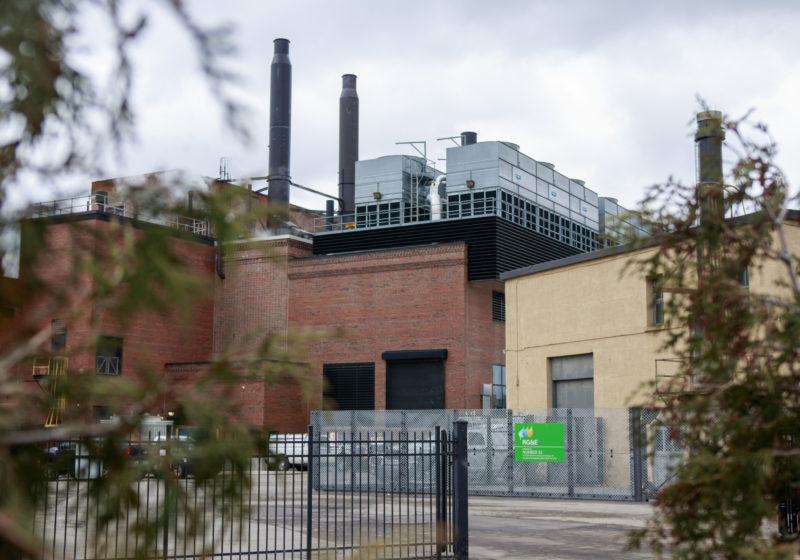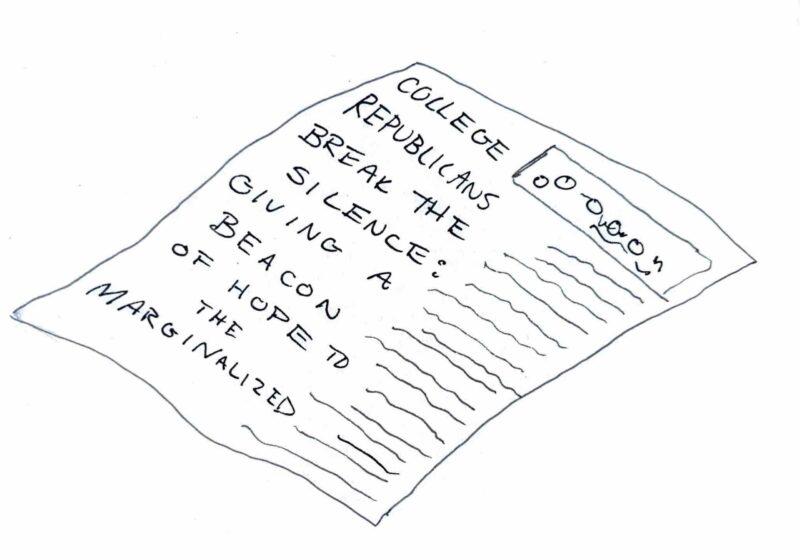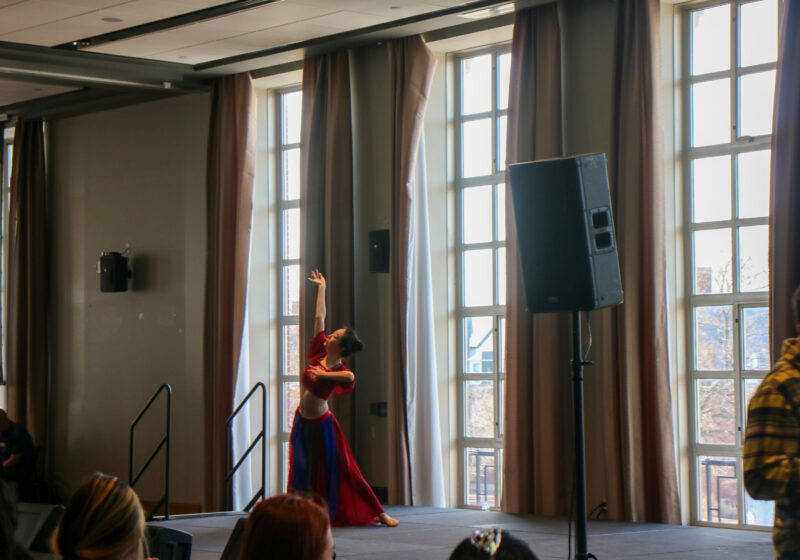UR students often struggle to reconcile the University’s Meliora — “ever better” — motto with the realities of campus life. Many scoffed at it in the wake of the Jaeger scandal, and many use it as a punchline when the stresses of academics overwhelm their physical and mental health. But the motto’s occasional irony is at its starkest when we make direct comparisons to other institutions: Why, for instance, does UR not have an environmental sustainability plan similar to those of peer universities?
Senior Izzy Murphy took this exact question to University President Sarah Mangelsdorf two years ago.
“We’re similar in a lot of ways to these other schools in size, in academic rigor, in what we pride ourselves on,” Murphy, an Environmental Science and Political Science double major, notes. “And we don’t have what all of them […] have — which is a comprehensive sustainability plan.” Brandeis University, NYU, and several Ivies like Harvard all have climate action plans. Regionally, RIT, the University at Buffalo, and Syracuse University have plans as well.
In 2019, Murphy and a small group of other students formed UR Students for a Climate Action Plan (URCAP) to push UR to follow its peers’ lead and adopt an urgently needed climate plan. Though student-driven, URCAP wasn’t affiliated with the University in any official capacity. “We had specific ideas and we didn’t want to be constrained [by an official relationship with the University],” Murphy says, “and also, we didn’t see the need to make an entire student organization […] We were just here for one initiative.”
In fall 2019, URCAP worked on putting together a comprehensive report to present to President Mangelsdorf about UR’s sustainability status and prospects. The report noted that, while some progress had been made, and the University had signaled an appetite for sustainability efforts in the past, a lot of work remained to be done. Among other things, the report found that the University utilized “zero electricity from onsite renewables” and that “the total [greenhouse gas] emissions for UR have grown 19% since 2010.”
URCAP sent the final report to President Mangelsdorf in early Spring 2020, along with a request to set up an official meeting. Mangelsdorf, having just relocated from a university with a centralized Office of Sustainability, agreed.
COVID-19 took center stage during spring 2020, even seeping into the format of URCAP and the University administration’s meeting. Attendees communicated through computer screens, boxed within little Zoom squares. Although there was widespread agreement and enthusiasm for a sustainability plan at that meeting, there was an implicit understanding in April 2020 that COVID-19 was, for the moment, more urgent a problem than climate change.
Sustainability strategizing remained on the backburner until November 2021, when it returned in full force.
Sustainability at UR has grown beyond University-unaffiliated student advocacy into an institutionalized Planning Team, with members spanning positions and campuses across the entire University, from the Medical Center to the Memorial Art Gallery to the Eastman School of Music.
At the top of the Team is the 17-member Advisory Board, representing leadership throughout the University. Perhaps the simplest explanation of the Board’s role is that they “advise and guide the outcomes to ensure that it is an implementable plan.” An important element of the Board’s duty is ensuring that a “clear narrative” can be presented to the greater Rochester community. “We want to have something to share with them when we’re asking for their time to tell them about what we’re doing,” says Cam Schauf, one of the Team’s two Co-Planning Leads as well as Director of Campus Dining Services.
The Core Team, composed of nine members, provides leadership and consultation to the last and largest element of the Planning Team: the Working Groups.
Approximately 15 people make up each of the three Working Groups, whose jobs so far have been to draft the actual goals of UR’s sustainability plan. Schauf says, “We worked to make sure that we had a mix of people from throughout the University [in all the Working Groups] — faculty and staff and students.”
To narrow the scope of the planning process, each Group focuses on its own theme pertaining to sustainability: Education and Engagement (University research and curricula), the Built Environment (buildings and manmade infrastructure), and Sustainable Operations (involving other operations like waste management, transportation, grounds, and more).
But even all of these committees, with their diversity of experience of expertise, aren’t enough to make a UR sustainability plan come to fruition. The crucial partner in this entire endeavor has been GreenerU, a consultant that helps institutions of higher education devise feasible sustainability strategies.
“I can’t imagine having to lead this process without their help,” says Amy Kadrie, the other Co-Planning Lead and Sustainability Coordinator at UR. “They’ve done this at other institutions and colleges that are similar to ours, so they really have the expertise on how the process works.” As part of their responsibility to coordinate the overall planning process, Kadrie says GreenerU has facilitated Working Group meetings, community outreach, and other larger events, and that they’ll be preparing the writing and design of the final plan.
As one might expect, crafting a comprehensive sustainability plan for an institution as large as the UR isn’t easy. In fact, it’s pretty damn complicated. Every person interviewed for this article cited UR’s decentralization as a major barrier to implementing institutional change, and there is, of course, the thorny issue of budgeting.
So how does the Planning Team ground their efforts?
“As a university, it’s our first sustainability plan ever,” Schauf says. “It doesn’t have to cover everything that we’ve ever thought we wanted to do. It needs to start moving us forward in all parts of the institution. And it needs to be able to provide the framework so that everybody in the institution can understand where we’re going and can help us get there.”
Schauf also explains that the Planning Team has designed criteria for the plan’s sustainability goals themselves, the most important being that they’re SMART (strategic, measurable, attainable, realistic, and timely) goals.
Some draft goals include establishing an Office of Sustainability at UR, reducing “campus-wide greenhouse gas intensity 30% by 2030, 35% by 2035, 40% by 2040 against a 2022 baseline,” and developing “programs that minimize or eliminate fossil-fuel transportation” by 2027, according to a document distributed by Planning Team members at a March 30 student input session.
At the time of writing, the Planning Team is at the stage of “finalizing the draft of the goal language,” in Schauf’s words, so the above goals and others are subject to change. They will be submitted for input and approval from constituents and stakeholders within the wider Rochester community.
The only thing that appears to be lacking in this process is publicity.
Murphy, the student activist, is thrilled to know that UR is committing to mitigating its environmental impact and is hopeful about its prospects, but they’re surprised by the shortage of public-facing communications about the planning process.
“I haven’t seen any publicity, and I follow [UR’s sustainability social media] pages,” Murphy says. “It does kind of suck that there isn’t that active publicizing of the process itself, especially considering how many stakeholders are involved in this process.”
The plan is intended to be finalized this summer, but the implementation that follows is going to be just as important. According to Murphy, “Just because the planning process is happening doesn’t mean that this is anywhere near over.”






